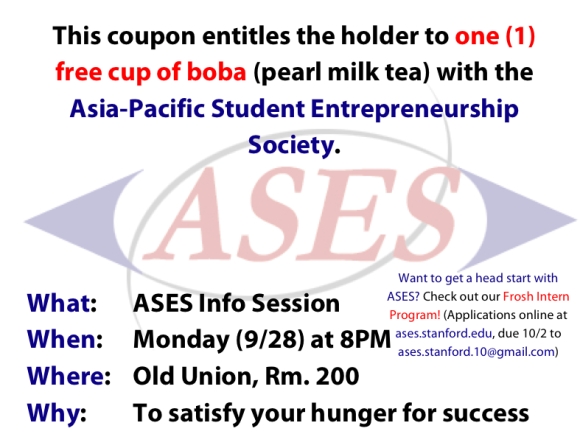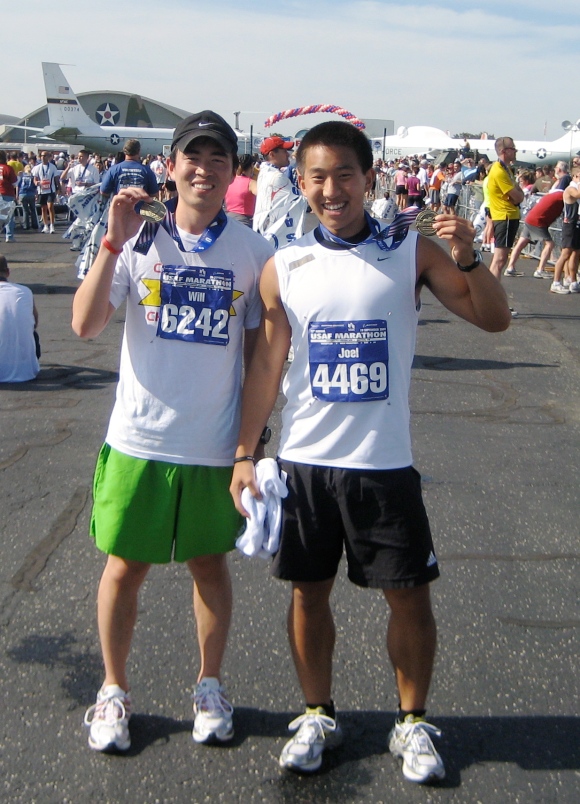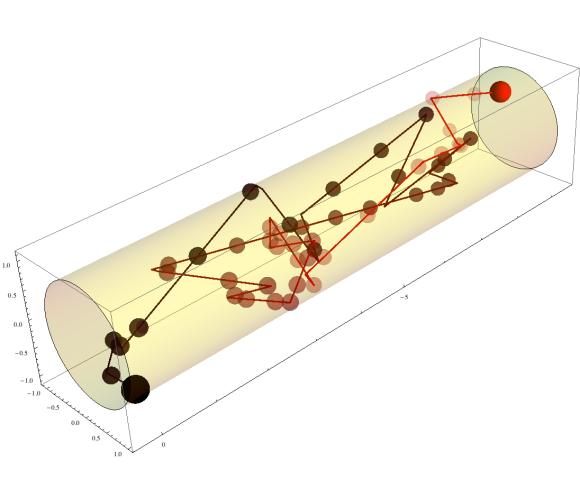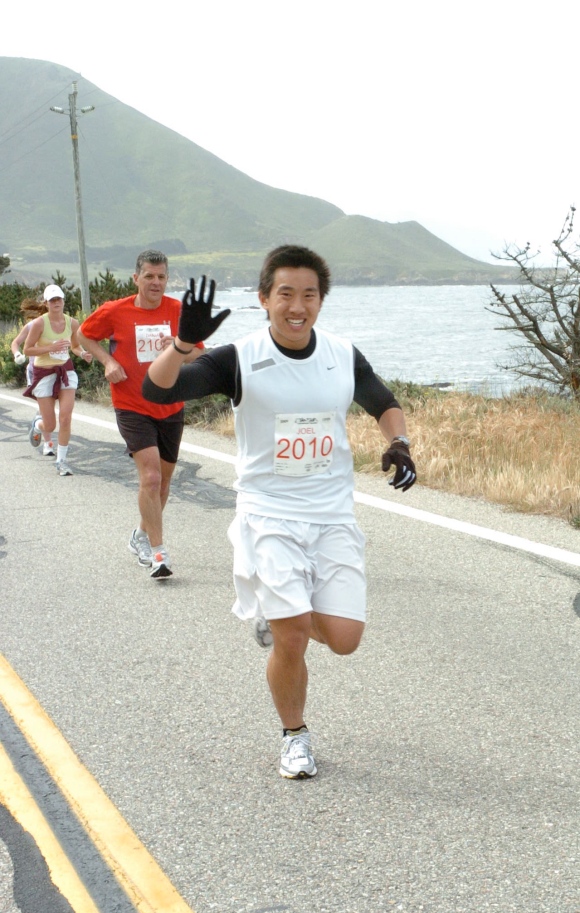It’s one and half weeks into fall quarter and everything––classes, clubs, research––is starting to pick up steam again. Last Friday, in White Plaza, hordes of bright-eyed freshmen swarmed the booths at Stanford’s annual Activities Fair, where student groups try their best to seduce the frosh with sweet candy and sweeter words. It’s pretty sketchy.
The Asia-Pacific Student Entrepreneurship Society (ASES), as a respectable student organization, of course participated.
Here’s my take on ASES:
ASES is an international network of today’s students and tomorrow’s business and technology leaders. We focus our efforts on a well-rounded entrepreneurship education for our members through in-depth workshops, competitions, speaker events, and international summits (2 each year). That said, our goal isn’t to have every ASES member go on to start a company. We emphasize entrepreneurial qualities––teamwork, self-belief, leadership, passion––simply because we believe these values drive innovation and are the key to success in all walks of life.

The Asia-Pacific Student Entrepreneurship Society (ASES)
Anyway, here’s my contribution, as Director of Marketing for ASES, to the freshman courtship process (all done in Microsoft Word):

(Front) The secret to successful marketing in college: free food

(Back) Irresistible
The underlying principles behind this blatant but effective marketing ploy come from basic psychology and a book on advertising I read a few weeks ago, My Life in Advertising and Scientific Advertising, by Claude Hopkins.
Think about it: instead of asking for attention or compliance from the freshmen, we offer a sample and a service.
No good advertiser demands a purchase in his ads; such a move would be akin to directly asking for the customer’s money, and in most cases, the response would be outright refusal. Instead, he offers a “Free, No-Risk 30-Day Trial!” Similarly, by framing our underlying request for attendance at our info session as an offering of boba, we give our new recruits a risk-free incentive to attend. Even if a freshman walked out of the info session with no intention of ever joining ASES, he still walked out with a free cup of boba in hand. What’s more, by adding on the back of the coupon a checklist of “Things Every Stanford Student Should Do”––a fun and debatably useful service––we gave our flyer value and guaranteed that freshmen and upperclassmen alike wouldn’t toss it in the trash can without first spending a furtive minute seeing how they measured up against a “true Stanford student.”
In part because of that doubled-up marketing tactic, our info session attendance––scientifically gauged by the quantity and rate of boba consumption––went through the roof.
If you’re interested in entrepreneurship, stay tuned: I’ll be writing more about upcoming ASES events as the quarter progresses.
-Joel







